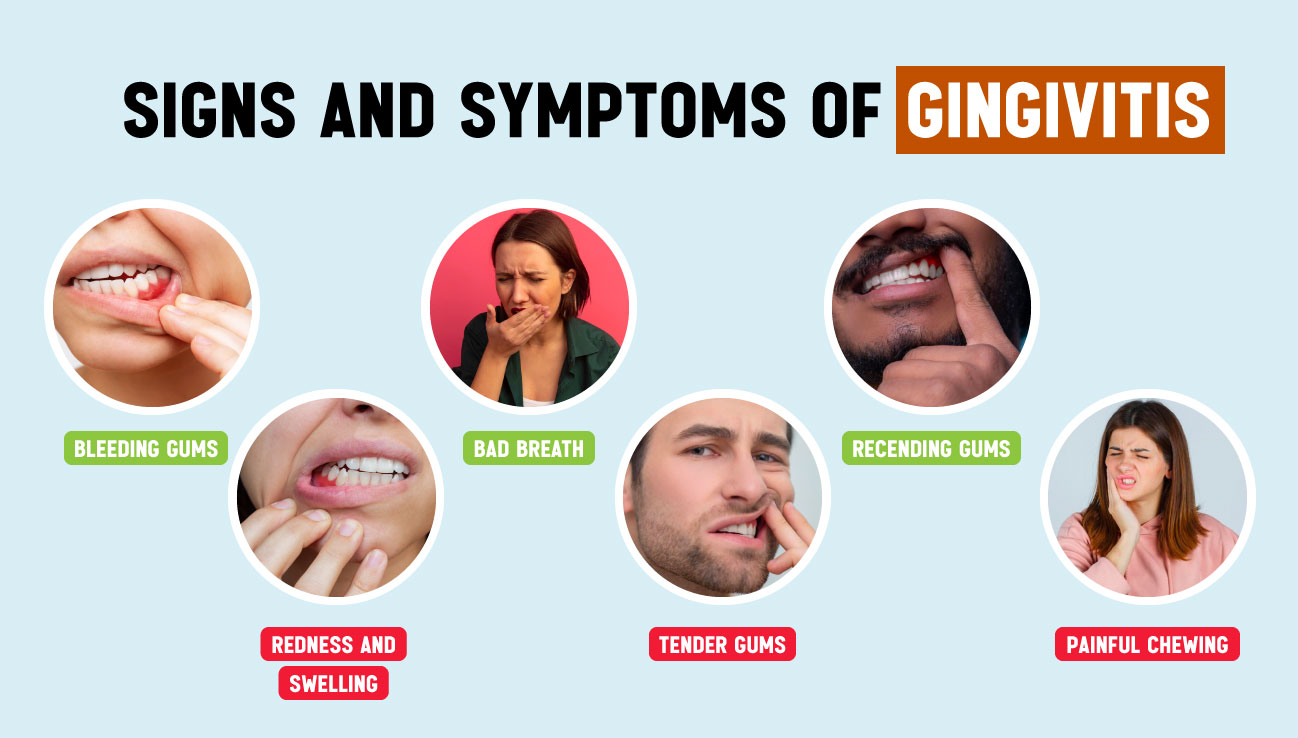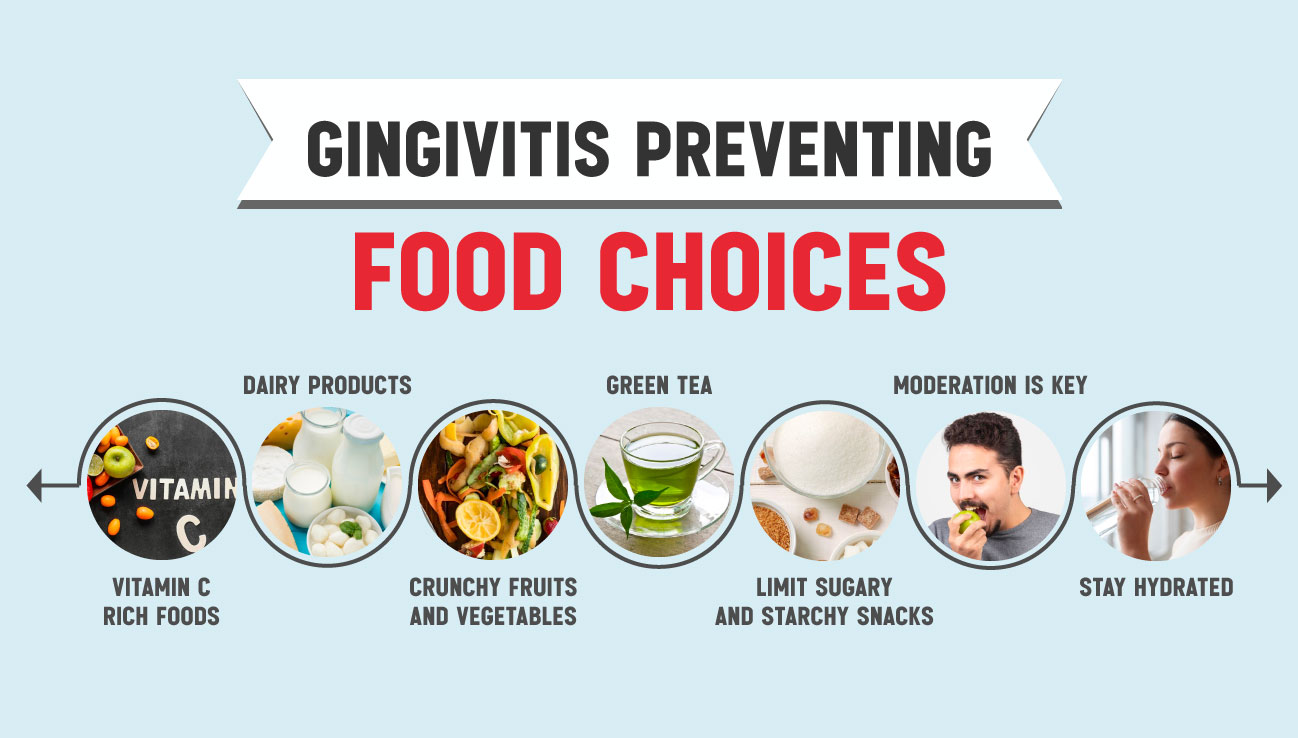.png)
Stim Brush | 12 Oct, 2023
Gingivitis Treatment: All-in-One Guide to Cure Gingivitis
Gingivitis is an early-stage gum disease caused by plaque buildup, leading to inflammation, redness, and bleeding. If untreated, it can progress to periodontitis and tooth loss.
Gingivitis, often called the silent troublemaker in oral health, is a common and early-stage gum disease that warrants our attention. This condition occurs when the gum tissues surrounding teeth become inflamed due to the accumulation of dental plaque. Though seemingly benign, gingivitis can wreak havoc in the oral cavity, causing gums to become red, swollen, and prone to bleeding. This initial stage of gum disease may not always manifest visible discomfort, leading many to underestimate its significance. However, left unaddressed, gingivitis can progress into periodontitis, a more severe form of gum disease, which can ultimately lead to tooth loss.
Understanding the causes, symptoms, and gingivitis treatment options is essential for maintaining oral health. Effective dental hygiene practices, regular check-ups, and lifestyle choices play pivotal roles in preventing and managing this condition.
Key Takeaways:
- Gingivitis Causes: Plaque buildup leading to gum inflammation.
- Symptoms: Red, swollen, and bleeding gums, bad breath, gum recession.
- Importance: Links to overall health issues like heart disease and diabetes.
- Prevention: Daily brushing, flossing, and regular dental check-ups.
- Diet Tips: Vitamin C-rich foods, dairy, crunchy fruits/vegetables, and green tea.
Table of Contents:
► What gingivitis is and why it's a common dental concern? ► Gingivitis signs and symptoms ► Why Gingivitis Matters: The Connection to Overall Health? ► Gingivitis-Friendly Daily Habits ► Gingivitis-Friendly Diet
What gingivitis is and why it's a common dental concern?
Dive into a common dental concern that might be affecting you or someone you know – Gingivitis. So, what's this tongue-twister all about?
Gingivitis is like the warning sign your body sends when your gums are unhappy. It's an early stage of gum disease, and it's incredibly common. You might notice your gums becoming red, swollen, or even bleeding when you brush or floss. That's gingivitis raising its flag.
But why is it such a big deal? Well, here's the thing: left untreated, gingivitis can snowball into something much worse called periodontitis, which can lead to tooth loss. Ouch!
Now, let's talk about why it's so common. Gingivitis is often the result of plaque – that sticky film of bacteria – building up on your teeth. It loves to hang around and, if you're not diligent with your oral care, it can wreak havoc on your gums.
The good news is, that gingivitis is preventable and treatable. With proper brushing, flossing, and regular dental check-ups, you can keep those gums in check. So, if you notice any gingivitis symptoms, don't panic. Just take action – your gums will thank you for it!
Gingivitis signs and symptoms
Gingivitis isn't always the easiest condition to spot, but there are several signs and symptoms that can help you identify it early on.
- Bleeding Gums
One of the most common indicators is bleeding gums, particularly when you brush or floss. It's a clear sign that your gums are not as healthy as they should be.
How To Stop Bleeding From Gums While Brushing Immediately?
- Redness and Swelling
Healthy gums should have a pinkish-firm appearance. If they look red and swollen, it's a sign of inflammation, a classic gingivitis symptom.
- Bad Breath
Persistent bad breath, also known as halitosis, can be linked to gingivitis. The bacteria causing the condition release odorous substances.
- Tender Gums
If your gums are sensitive or tender to the touch, it's another signal that something might be amiss.
- Receding Gums
Gingivitis can cause the gum line to recede over time, making your teeth appear longer. Keep an eye out for changes in your gum's position.
- Painful Chewing
Some people with gingivitis experience discomfort or pain while chewing, indicating gum sensitivity.
It's important to remember that gingivitis is highly treatable, especially if caught early. If you notice any of these signs and symptoms, it's a good idea to take gingivitis treatment.
Why Gingivitis Matters: The Connection to Overall Health?
Gingivitis is not just a dental issue; it's also a key player in your overall health. Many people don't realize that the condition of your gums can impact your entire well-being. When gingivitis goes untreated, it can lead to periodontitis, a severe gum disease that has been linked to more significant health problems.
Research suggests that the inflammation and bacteria associated with gum disease can enter the bloodstream, affecting other parts of the body. This connection has raised concerns about its role in heart disease, diabetes, and even pregnancy complications. So, why does gingivitis matter? Because maintaining healthy gums isn't just about a great smile – it's about safeguarding your broader health. Regular dental care and gum disease prevention should be a priority for everyone.
Gingivitis-Friendly Daily Habits
To keep gingivitis at bay, it's not just about your dental appointments – it's the daily habits that make all the difference. Let's talk about some gingivitis-friendly daily practices.
- First and foremost, brushing twice a day with a soft-bristle toothbrush and fluoride toothpaste is essential.
- Don't forget to give your tongue a gentle brush too.
- Floss daily to remove the plaque between your teeth.
- Rinse with an antibacterial mouthwash to help kill harmful bacteria.
- Maintaining a balanced diet low in sugary snacks and rich in fruits and veggies supports gum health.
- And finally, hydrate with water because it helps wash away food particles.
These habits can go a long way in keeping your gums healthy and your smile bright.
Gingivitis-Friendly Diet
- Vitamin C-Rich Foods
Incorporate foods like oranges and strawberries, as vitamin C promotes gum health by supporting collagen production.
- Dairy Products
Include yogurt and cheese in your diet for their calcium content, which fortifies both teeth and gums.
- Crunchy Fruits and Vegetables
Foods like apples and carrots act as natural toothbrushes, helping to remove plaque and stimulate gums.
- Green Tea
Rich in antioxidants, green tea can reduce gum inflammation and contribute to overall oral health.
- Limit Sugary and Starchy Snacks
Minimize consumption of sugary and starchy snacks, as they can provide fuel for harmful oral bacteria.
- Moderation is Key
Enjoy these gingivitis-friendly foods in moderation to maintain a balanced diet.
- Stay Hydrated
Drinking water helps wash away food particles and contributes to gum health.
A gingivitis-friendly diet includes these foods and practices to support healthy gums and maintain a winning smile.
For a proactive approach to gingivitis treatment, buy Periex Mouthwash




